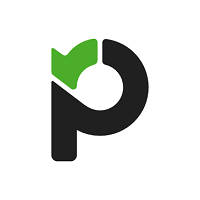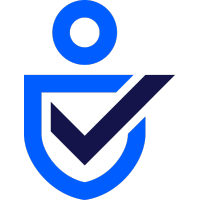Description

AI TimeClock

WorkforceHub
Comprehensive Overview: AI TimeClock vs WorkforceHub
AI TimeClock and WorkforceHub are digital solutions designed to streamline and enhance workforce management. Here's a breakdown of each in terms of their primary functions, target markets, market share, user base, and key differentiators:
AI TimeClock
a) Primary Functions and Target Markets:
- Primary Functions: AI TimeClock is used for tracking employee attendance and managing time-off requests. It offers features like automated time capture, real-time attendance tracking, and integration with payroll systems to simplify the process of preparing employee paychecks. Additionally, it might include features like scheduling and remote clock-in capabilities to cater to a variety of business needs.
- Target Markets: Generally, AI TimeClock targets small to medium-sized businesses (SMBs) looking for efficient time-tracking solutions that reduce manual input errors and enhance productivity.
b) Market Share and User Base:
- While exact market share figures can be difficult to obtain, AI TimeClock typically competes within the broader category of time and attendance solutions. Its user base is likely to include businesses primarily in sectors heavily reliant on shift work, such as retail, hospitality, healthcare, and manufacturing.
c) Key Differentiating Factors:
- AI TimeClock's strength lies in its ability to integrate AI technology to provide more intelligent and adaptive solutions for time management. This can include predictive capabilities for scheduling and potential machine learning algorithms to suggest improvements in workforce management based on patterns detected in the data.
WorkforceHub
a) Primary Functions and Target Markets:
- Primary Functions: WorkforceHub is a more comprehensive workforce management platform encompassing not only time and attendance but also broader HR functions like onboarding, employee data management, scheduling, and compliance management. It aims to simplify HR processes by offering an all-in-one solution.
- Target Markets: WorkforceHub targets a slightly broader market that includes SMBs in various industries, but it may also cater to somewhat larger organizations that require a more holistic approach to human resource management.
b) Market Share and User Base:
- WorkforceHub's position in the market, like AI TimeClock, is competitive within the workforce management solution space. Its user base includes organizations that are looking for a mid-tier option between basic time-tracking solutions and large-scale enterprise HR systems.
c) Key Differentiating Factors:
- WorkforceHub differentiates itself with a more extensive suite of HR tools beyond time tracking, positioning itself as a more comprehensive solution for workforce management. Its integration capabilities with other HR and payroll systems can make it more appealing for organizations seeking to unify their HR operations under a single platform.
Comparison in Terms of Overall Market Share and User Base:
Both AI TimeClock and WorkforceHub exist within the competitive landscape of workforce management solutions. Generally, AI TimeClock might focus on a more niche part of the market with specialized needs for advanced time-tracking solutions using AI. In contrast, WorkforceHub's broader HR functionalities give it a potentially wider appeal, possibly resulting in a larger market share.
Conclusion:
The choice between AI TimeClock and WorkforceHub often depends on an organization's specific needs. If a business requires advanced time-tracking with the potential benefits of AI, they might lean towards AI TimeClock. Meanwhile, if the need extends into broader HR functions, WorkforceHub could be the preferred choice due to its wider feature set. Ultimately, the decision will depend on the specific requirements, industry, and size of the business.
Contact Info

Year founded :
Not Available
Not Available
Not Available
Not Available
Not Available

Year founded :
Not Available
Not Available
Not Available
United States
http://www.linkedin.com/company/workforcehub
Feature Similarity Breakdown: AI TimeClock, WorkforceHub
AI TimeClock and WorkforceHub are both employee management solutions designed to streamline time tracking and workforce management. Here’s a breakdown of their features, user interfaces, and unique offerings:
a) Core Features in Common:
- Time Tracking: Both tools offer functionalities to track employee hours precisely, including clock-in and clock-out options.
- Scheduling: They provide tools to create and manage work schedules effectively, ensuring coverage and compliance.
- Payroll Integration: Integrations with payroll systems to ensure accurate and efficient payroll processing based on tracked hours.
- Reporting and Analytics: Capabilities to generate reports for hours worked, attendance, overtime, and other workforce metrics.
- Absence and Leave Management: Manage employee absences, vacation requests, and leave balances within the platform.
- Mobile Access: Both offer mobile applications or web-based access to allow employees and managers to access functionalities on-the-go.
b) Comparison of User Interfaces:
- AI TimeClock generally focuses on simplicity and ease of use, catering to businesses looking for a straightforward time-tracking solution. Its interface is typically clean, with intuitive navigation and minimalistic design, which can be particularly appealing to small to mid-sized businesses.
- WorkforceHub offers a more robust interface, integrating several HR functionalities which might make it slightly more complex but powerful for larger organizations. It usually provides a dashboard that brings together various aspects of workforce management, which can help in getting a holistic view of HR operations.
c) Unique Features:
-
AI TimeClock:
- AI-Powered Features: Offers advanced timeclock solutions leveraging AI to predict scheduling conflicts, automatically adjust shifts, and optimize resource allocation. This technology can enhance efficiency by reducing manual intervention and errors.
- Facial Recognition: Some implementations of AI TimeClock incorporate facial recognition technology to ensure a secure and contactless clock-in process.
-
WorkforceHub:
- Comprehensive HR Suite: WorkforceHub tends to offer a broader range of HR functionalities beyond just time tracking, such as applicant tracking systems (ATS), employee self-service portals for benefits management, and performance management tools.
- Customization Options: Often provides more customization options for reports and dashboards, allowing businesses to tailor the experience to their specific HR needs and metrics.
These differences can determine which product might be more appropriate based on the specific needs of a business, like the level of AI integration or the breadth of HR functionalities required.
Features

Reporting
Integration & Compatibility
Accurate Payroll Integration
User-Friendly Scheduling
Insightful Reporting
Time Tracking
Smart Time Tracking

Time Tracking
Performance Management
Payroll Management
Reporting and Analytics
Employee Self-Service
Best Fit Use Cases: AI TimeClock, WorkforceHub
AI TimeClock and WorkforceHub are tools designed to optimize workforce management, but they cater to different needs and scenarios. Here's a breakdown of their best fit use cases:
AI TimeClock
a) Best Fit Use Cases:
-
Small to Medium-sized Businesses (SMBs): AI TimeClock is often favored by SMBs seeking an efficient and automated way to track employee time and attendance. Its AI-driven features can simplify payroll processes and ensure compliance with labor laws.
-
Industries with Flexible/Remote Workforces: Companies with highly flexible work arrangements or remote employees benefit from AI TimeClock's ability to accurately track time without physical checkpoints. This includes tech companies, creative agencies, and consulting firms.
-
Projects Requiring Detailed Time Logging: Projects that necessitate meticulous logging of hours, such as legal case tracking or consultancy projects, can leverage AI TimeClock for precise data collection and reporting.
-
Industries with High Turnover: Retail and hospitality sectors, known for high employee turnover, can use AI TimeClock to streamline onboarding and time tracking for new hires efficiently.
d) Industry Verticals/Company Sizes:
- SMBs Across Various Sectors: AI TimeClock is scalable for smaller companies across different verticals such as retail, hospitality, and tech, providing cost-effective time management solutions.
WorkforceHub
b) Preferred Use Cases:
-
Larger Organizations: WorkforceHub is more suited to larger enterprises that need comprehensive workforce management solutions, integrating time tracking with HR functionalities like scheduling, compliance, and benefits management.
-
Industries with Complex Scheduling Needs: Sectors like healthcare, manufacturing, and logistics that rely on complex shift schedules and require integrated compliance and safety protocols find WorkforceHub particularly valuable.
-
Multi-location Operations: For organizations operating in multiple locations, WorkforceHub can centralize workforce management, ensuring consistency and efficiency across sites.
-
Need for Extensive HR Features: Companies that require a fully integrated HR solution, including recruitment, onboarding, and performance management, would benefit from WorkforceHub’s robust offerings.
d) Industry Verticals/Company Sizes:
- Mid to Large Enterprises: WorkforceHub caters more effectively to medium-sized to large enterprises needing broad-spectrum workforce management functionalities.
- Healthcare, Manufacturing, Logistics: These industries benefit particularly from WorkforceHub’s features designed for managing complex schedules, ensuring regulatory compliance, and supporting operational scalability.
In summary, AI TimeClock is ideal for SMBs and flexible workforces needing streamlined time tracking, while WorkforceHub excels in larger organizations and industries requiring comprehensive HR and scheduling support.
Pricing

Pricing Not Available

Pricing Not Available
Metrics History
Metrics History
Comparing undefined across companies
Conclusion & Final Verdict: AI TimeClock vs WorkforceHub
When evaluating AI TimeClock and WorkforceHub, there are several factors to consider, including features, ease of use, pricing, scalability, and customer support. Here’s a summary to help you decide which product may offer the best overall value for your specific needs.
a) Best Overall Value
Determining the best overall value depends on an organization's specific needs and priorities. Generally, if an organization prioritizes cutting-edge AI capabilities and automation in time tracking, AI TimeClock may provide a better value due to its advanced technology. Conversely, if a company requires a comprehensive workforce management solution with broader HR functionalities, WorkforceHub might offer a better overall package.
b) Pros and Cons
AI TimeClock
Pros:
- Advanced AI Features: Offers robust AI-driven solutions for accurate time tracking and labor analysis.
- Automation: Reduces manual input and potential errors through automation.
- Integration: Compatible with other business tools for seamless operation.
Cons:
- Complexity: The advanced AI features might require a steeper learning curve or specialized knowledge to fully leverage.
- Cost: Premium features may come at a higher cost that might not be justifiable for smaller businesses with basic needs.
WorkforceHub
Pros:
- Comprehensive Solution: Offers a wide range of workforce management features beyond time tracking, including scheduling, HR management, and compliance tools.
- User-friendly: Intuitive interface and easy navigation make it accessible for users at all levels.
- Scalability: Well-suited for organizations that anticipate growth and increased complexity in HR needs.
Cons:
- Feature Overload: For businesses looking solely for time-tracking solutions, the extensive features might feel unnecessary and overwhelming.
- Initial Set-up: Implementation may take longer due to the wide array of functionalities and customization options available.
c) Recommendations
- Assess Your Needs: Clearly define what your organization requires from a time and workforce management tool. Consider factors like whether you need cutting-edge AI features or a comprehensive HR management platform.
- Pilot Programs: Utilize free trials or demos offered by both AI TimeClock and WorkforceHub to understand which platform aligns better with your team's workflow.
- Cost vs. Value Analysis: Review your budget and assess whether the advanced features of AI TimeClock justify the potential additional cost compared to the broader but possibly more affordable offerings of WorkforceHub.
- User Experience: Consider the technical proficiency of your workforce; choose a solution that your team can easily adapt to without excessive training.
Ultimately, the choice between AI TimeClock and WorkforceHub should align with your business’s specific operational needs, technical capabilities, and budgetary constraints. Both platforms have their distinct strengths, so aligning these with your business goals is key to choosing the right solution.
Add to compare
Add similar companies



